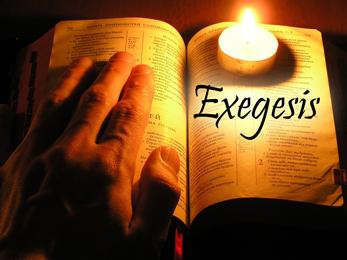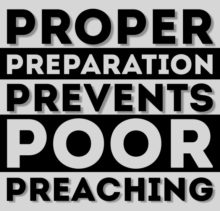Preparing to Preach Illustrated
An Example of Exegesis
In the last post we looked at the subject of how you prepare to preach a sermon. We considered the difference between Exegesis and Eisegesis, and considered a suggested pattern to be used. In this post I want to look at  preaching using exegesis in your preparation of a sermon. Since I recently preached on Matthew 2:1-12 (the story of the Magi following the star), and heard a message on the same passage, let’s look at this section of Scripture.
preaching using exegesis in your preparation of a sermon. Since I recently preached on Matthew 2:1-12 (the story of the Magi following the star), and heard a message on the same passage, let’s look at this section of Scripture.
Historical Considerations
Remember that we said that to be true to the Scriptures you have to consider what the section of Scripture meant to the original hearers. That’s what it means to preach using exegesis as your tool. As you consult various study guides, you will find that the book of Matthew was intended to convince Jews that Jesus was the Messiah. Much of the book reflects this basic perspective as Matthew used Jewish terms and described Jewish holidays more fully than any other gospel writer.
Canonical Considerations
Scripture interprets Scripture. We learned that principle last time. What strikes me in this passage is that Gentiles come to worship. John 12:21 tells of another time that Gentiles came to Jesus. Some Greeks came to Phillip and asked to see Jesus. Here is what happened:
20 Now there were some Greeks among those who went up to worship at the festival. 21 They came to Philip, who was from Bethsaida in Galilee, with a request. “Sir,” they said, “we would like to see Jesus.” 22 Philip went to tell Andrew; Andrew and Philip in turn told Jesus.
23 Jesus replied, “The hour has come for the Son of Man to be glorified.”
There was something about this event that made Jesus say that the time is now for Jesus’ passion to begin. Matthew is making it clear that Jesus is not just the King of the Jews, but King of all nations, as prophesied.
Preaching using exegesis will look at other passages that relate to what is presented in the passage you are studying.
Symbolic
There are many symbols in this passage. Jesus as the light of the world corresponds to the star. The Magi, as noted above, represent the fact that Jesus is a savior for the world. There is even an old legend that says that the three wise men came from various areas in the world, and were of different ethnic backgrounds, and thus, different colors. All came to worship the new king.
Reflection
As you reflect on this passage, there are many themes that could become part of your message as you prepare to preach using exegesis as your pattern.
- You could focus on the incredible truth of Psalm 19, that the heavens declare the glory of God.
- You could focus on what it meant that God so love the world that he sent his one and only son. He even communicated that in a supernatural way to the people in “the east”.
- You could explore what it means to search for Jesus. It begins with a hunger. There are many people in the world today driven by a hunger for meaning, or a hunger for purpose. They seek to fulfill that hunger through drugs, or relationships, or work. A couple of weeks ago I participated in a worship service at a rescue mission. The men there have nothing, at least in a material sense. They got that way because of a hunger for something, and they tried to fill that hunger with alcohol or drugs.
- Or you could talk about what it means to find Jesus. I love the story about the little girl in a Sunday School play. All the parts had been assigned, so she volunteered to play to role of the doctor who delivered Jesus. Obviously, it was a creative teacher. When the time came for Jesus to be born, in this play they called for the “doctor”, who made sure that Mary was comfortable. When the time came for birth, Mary asked, “What is it, doc?” The little doctor smiled and said, “Why, it’s a …God.”
The wise men found God. That’s worth sharing about.
In this post I’ve been trying to explain exegesis and how it works to draw out of Scripture its message. As a further explanation of this, here is Francis Chan explaining the difference between exegesis and eisegesis. In the next post I’ll demonstrate how to use eisegesis effectively.




Leave a Reply
Want to join the discussion?Feel free to contribute!